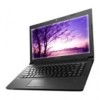Lenovo E4325 Hardware Maintenance Manual - Lenovo E4325 - Page 34
Power system checkout, Checking the ac power adapter - laptop
 |
View all Lenovo E4325 manuals
Add to My Manuals
Save this manual to your list of manuals |
Page 34 highlights
• Improper disc insertion or use of an optical drive • Diskette drive damage caused by pressure on the diskette drive cover, foreign material in the drive, or the insertion of a diskette with multiple labels • Damaged or bent diskette eject button • Fuses blown by attachment of a nonsupported device • Forgotten computer password (making the computer unusable) • Sticky keys caused by spilling a liquid onto the keyboard • Use of an incorrect ac power adapter on laptop products The following symptoms might indicate damage caused by nonwarranted activities: • Missing parts might be a symptom of unauthorized service or modification. • If the spindle of a hard disk drive becomes noisy, it may have been subjected to excessive force, or dropped. Power system checkout To verify a power symptom, do the following: 1. Turn off the computer. 2. Remove the battery pack. 3. Connect the ac power adapter. 4. Check that power is supplied when you turn on the computer. 5. Turn off the computer. 6. Disconnect the ac power adapter and install the charged battery pack. 7. Check that the battery pack supplies power when you turn on the computer. If you suspect a power problem, see the appropriate one of the following power supply checkouts: • "Checking the ac power adapter" on page 28 • "Checking operational charging" on page 29 • "Checking the battery pack" on page 29 Checking the ac power adapter If the computer fails only when the ac power adapter is used, refer to the information in this topic to check the ac power adapter. • If the power-on indicator does not turn on, check the power cord of the ac power adapter for correct continuity and installation. • If the computer does not charge during operation, go to "Checking operational charging" on page 29. To check the ac power adapter, do the following: 1. Unplug the ac power adapter cable from the computer. 2. Measure the output voltage across the plug of the ac power adapter cable. The correct voltages are shown in the following table. 3 2 1 (20V) Pin Voltage (V dc) 1 +20 2 0 3 Ground Note: The output voltage across pin 2 might differ from the voltage that you measure. 3. Depending on the voltage that you measure, do one of the following: 28 Hardware Maintenance Manual















